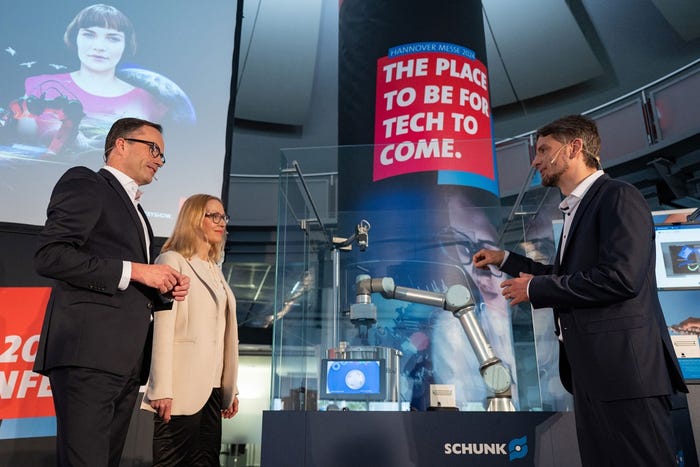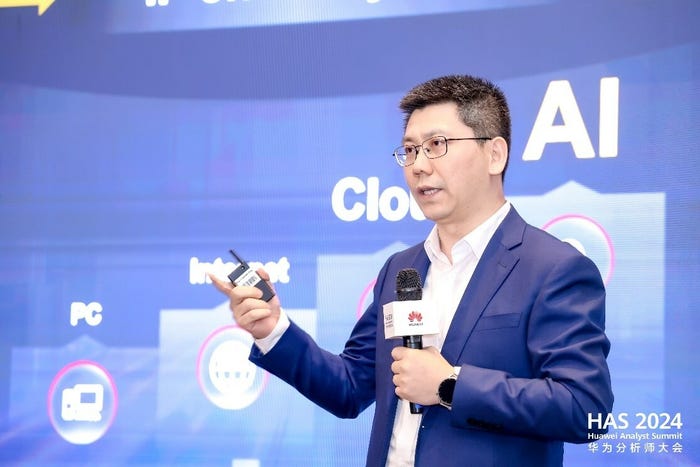The benefits of using edge computing middleware and tips for selecting the best approach for taming IoT complexity.
June 4, 2019

By Matt Hamblen
Edge computing middleware in an industrial or enterprise software architecture is akin to plumbing on steroids. This software layer must efficiently connect different applications, data sources, devices (such as sensors and endpoints), services and business entities.
Today, IoT and industrial IoT within an organization can pose enormous complexity because of the sheer scale of edge projects. The ability to run cloud and AI applications at the network edge only increases the level of intricacy.
Infrastructure management alone “can quickly become a problem of nightmarish proportions at the edge,” said IDC Analyst Ashish Nadkami.
The advent of cloud computing helped IoT explode. As a result, edge computing can reduce the cost of cloud performance by putting compute power close to the network edge and devices, said Keith Steele, chairman of the EdgeX Foundry technical steering committee.
“There are many problems associated with edge with lots of software and massive numbers of protocols around this,” Steele added. “Sometimes there is hardware fragmentation and silicon fragmentation. What we have at the edge is a real problem because it’s very heterogeneous, with many components, operating systems and silicon. Edge middleware is how we bring it together.”
Open or Proprietary Software
Edge middleware products can be divided into open platforms and proprietary platforms. For example, EdgeX Foundry is an open source, vendor-neutral software framework for IoT edge computing. There are many other open approaches, including FogLAMP, Kura, OpenHAB, Thingsboard.io, OpenEdge, SiteWhere and Kaa — the latter two offering enterprise editions. For the most part, open source approaches work by offering IT shops common building blocks and APIs (Application Programming Interfaces). They are often hardware and OS agnostic.
By comparison, proprietary approaches often come from large, well-known vendors such as Microsoft and AWS. Lesser-known vendors that often include open source software in their products include Zededa, Foghorn and Niolabs. Analysts are working to develop ways to rate vendors but there aren’t any clear leaders as yet.
For example, MachNation has rated 17 IoT Edge platform vendors for a second year.
Customization Is Expected
Whatever the choice in middleware, some level of customization is inevitable. “Nobody yet can provide a turn-key, off-the-shelf solution,” IDC’s Nadkami said. “The nature of the edge beast is that it’s custom or semi-custom.”
Of course, customization raises the age-old problem of whether an organization has the right IT staff trained to handle it or can find a skilled integrator who can support a large-scale project.
Given the hardware and software fragmentation in the market, part of EdgeX Foundry’s mission is to “exploit that heterogeneity and give people a choice,” said Steele, who is also the chief executive officer of IoTech, which provides distributed computing and middleware.
Edinburgh Due in June
The next and fourth release of EdgeX Foundry, dubbed Edinburgh, is expected sometime in June. There were 25,000 downloads in April of the available versions and nearly 70 companies have been contributing to its development. “Momentum is really starting to build,” Steele said. Leading members involved with EdgeX Foundry include Analog Devices, Dell EMC, Intel, VMWare and Samsung.
One of the biggest challenges when working with APIs based on open source is not just reading data from devices, sensors and actuators in a factory, “but being able to have data that’s interoperable,” Steele said.
EdgeX Foundry is basically a collection of more than a dozen micro-services written in Java, Go, C and other languages that are deployed via Docker or Docker Compose. In general, data flows from a sensor and is collected by a data service, where it is then passed to a core service and then passed to an export service for transformation and filtering. At that point, the data is available for edge analysis which can trigger device actuation or shutdown.
Analyst firm MachNation described in a report the benefits of open source edge platforms, but the ultimate choice depends on an enterprise’s expectations for the project. “An open source platform is like a ball of clay that requires some serious work before it’s ready for enterprise users,” said MachNation President Steve Hilton.
Part of the consideration for IT leaders is whether a prospective IoT platform on the edge or in the cloud can support several types of users, including IT admins, backend developers, operators, hardware developers and user interface developers, Hilton said.
Case Studies Emerging with Edge Analytics
The benefits of using edge computing middleware are starting to emerge in case studies. A key area has been applying analytics and other artificial intelligence at the edge to better monitor processes for greater productivity or efficiency, perhaps by lowering network latency in critical processes.
“Edge platforms allow certain process such as machine learning to be decentralized and occur in a more optimal physical location,” Hilton said. “By running these processes at the edge rather than in the cloud, an enterprise can create more secure, reliable and scalable IoT deployments.”
Hilton gave the example of a piece of robotics equipment on a factory floor that is connected to an edge platform. The IoT application running on the edge hardware monitors the robot to make sure it doesn’t start assembling components incorrectly. If the connection linking the robot to the cloud fails and the monitoring application is only based in a cloud location, it wouldn’t be able to monitor the robot if something did go wrong. However, if the IoT app runs on the edge, it wouldn’t need the connection to the cloud and monitoring could theoretically continue. As a result, any problem with the robot could be noticed and an action taken.
FogHorn Systems is one of a number of vendors providing machine learning to analyze data from high resolution cameras and other sources for detecting irregularities. In one example, an oil refinery’s flare used to burn off certain gases is being constantly monitored via video to check for underlying problems in the refining process. The company’s Lightning ML platform serves as the edge middleware; it ingests data from the video and processes it in a convolutional neural network, then pushes out insights to a user interface, according to Ramya Ravichandar, vice president of product management.
SAS is also working with GE Transportation, which recently merged with Wabtec, to provide analytics on locomotives in North America to help cut down on fuel usage. As the locomotives move along tracks at the network edge, they rely in part on SAS Event Stream Processing.
In the locomotive example, Wabtec provides EdgeLINC software to support edge analytics, and has embedded the SAS analytics. EdgeLINC also incorporates “a lot” of open source technology, said Garret Fitzgerald, general manager of transport intelligence at GE Transportation.
“We have the ability to support all our customers who have a mix of internal technology and open standards,” he said. The EdgeLINC API also allows customization that’s usually needed in the transportation industry.
Advice to IT: Get the Big Picture First
To gain edge analytics insight, companies need to have a holistic view of how edge computing will fit into an overall architecture, IDC’s Nadkami argued. “One of my pet peeves with AI is that it’s a software approach, which dictates having the right hardware,” he said. “Doing analytics is a function of knowing the overall [goal] and the time-to-value” for an investment.
How a company picks edge middleware is “not only a decision on hardware and software,” he added. “You have to look at edge end-to-end and implement a strategy.”
In fact, some edge computing trials and rollouts haven’t worked out, even when companies have invested heavily. “It’s trial and error and if anybody has been able to pull it off without trial and error, that’s a miracle,” Nadkami added. “Edge is so nascent that nobody pulls it off without some iterative process.”
You May Also Like



.png?width=300&auto=webp&quality=80&disable=upscale)


.png?width=300&auto=webp&quality=80&disable=upscale)